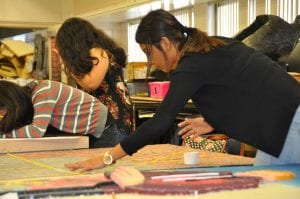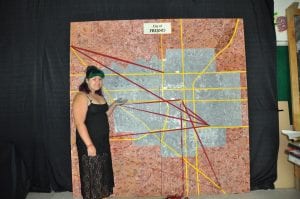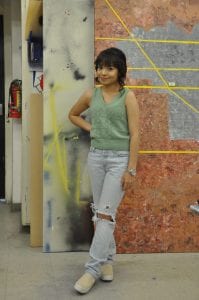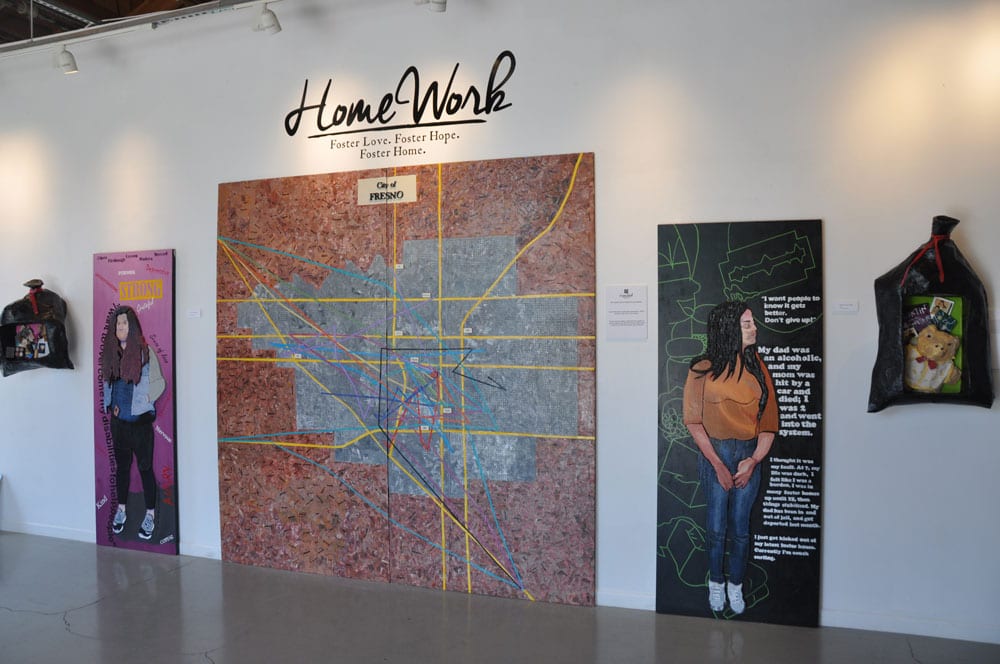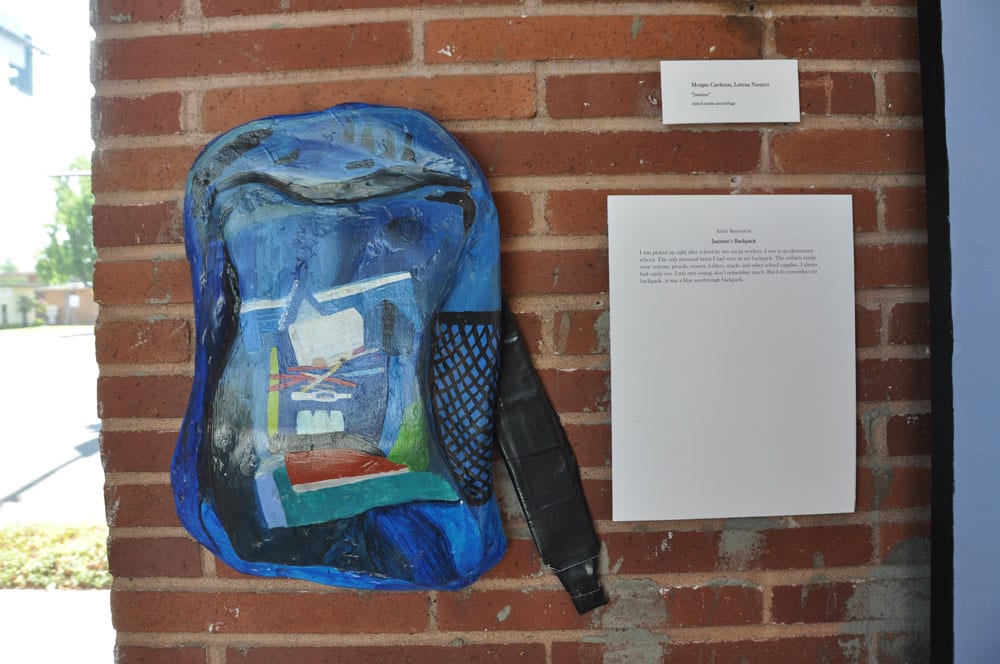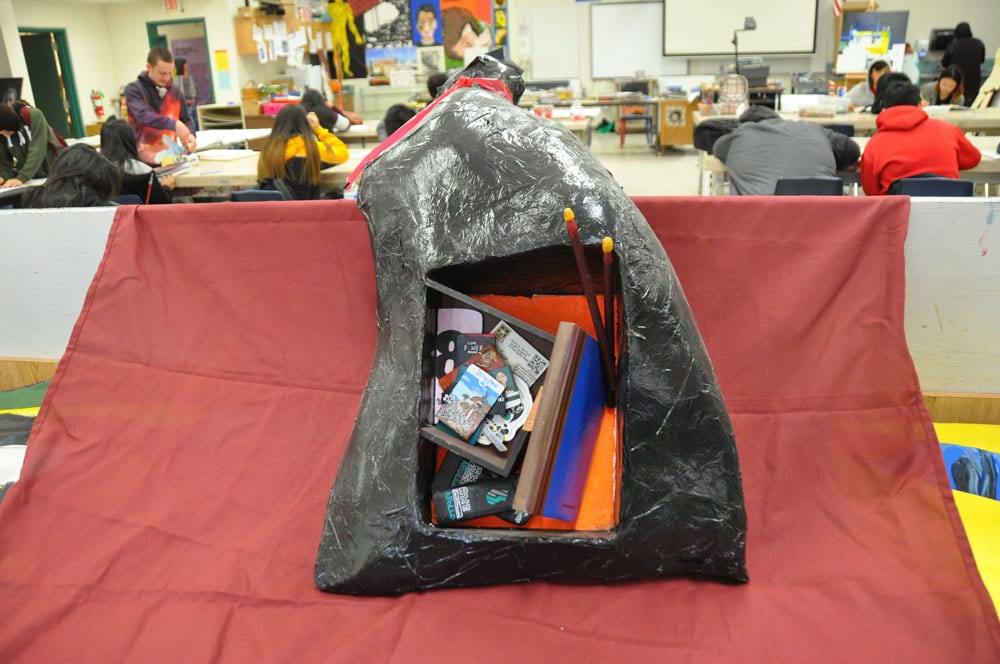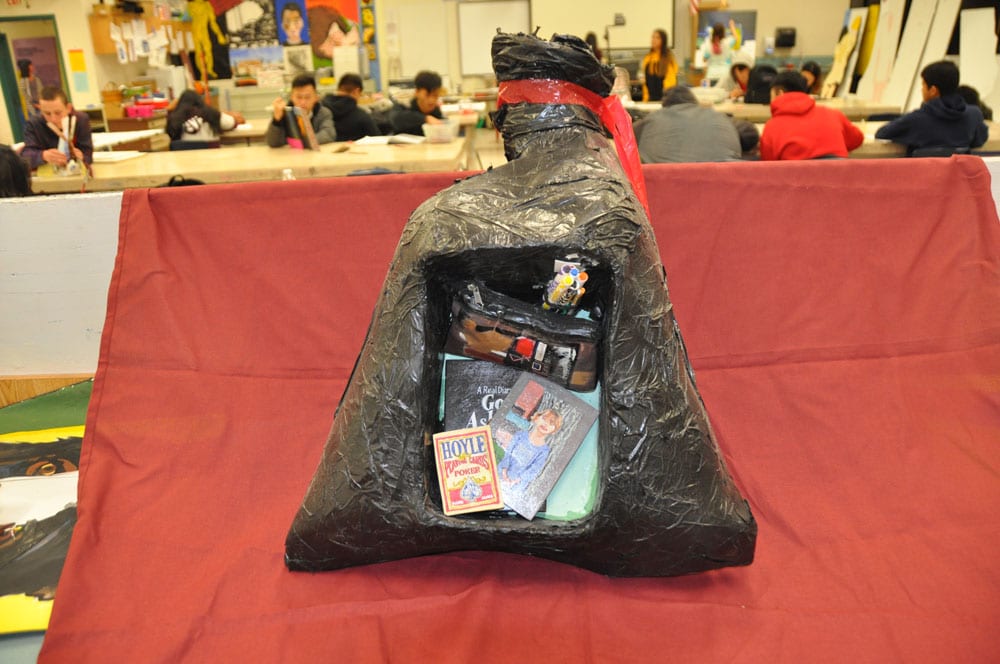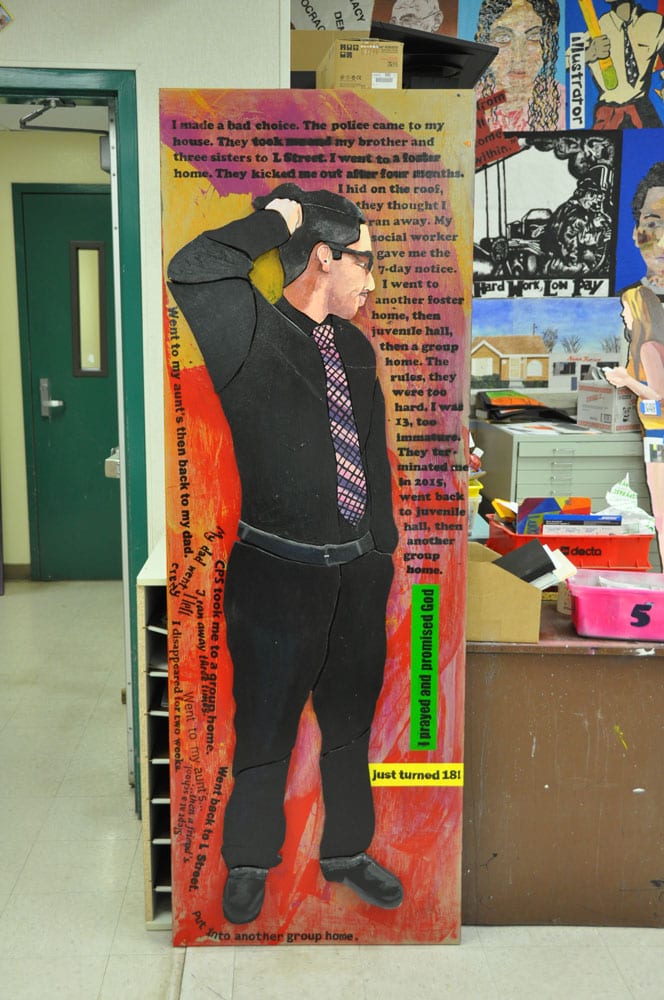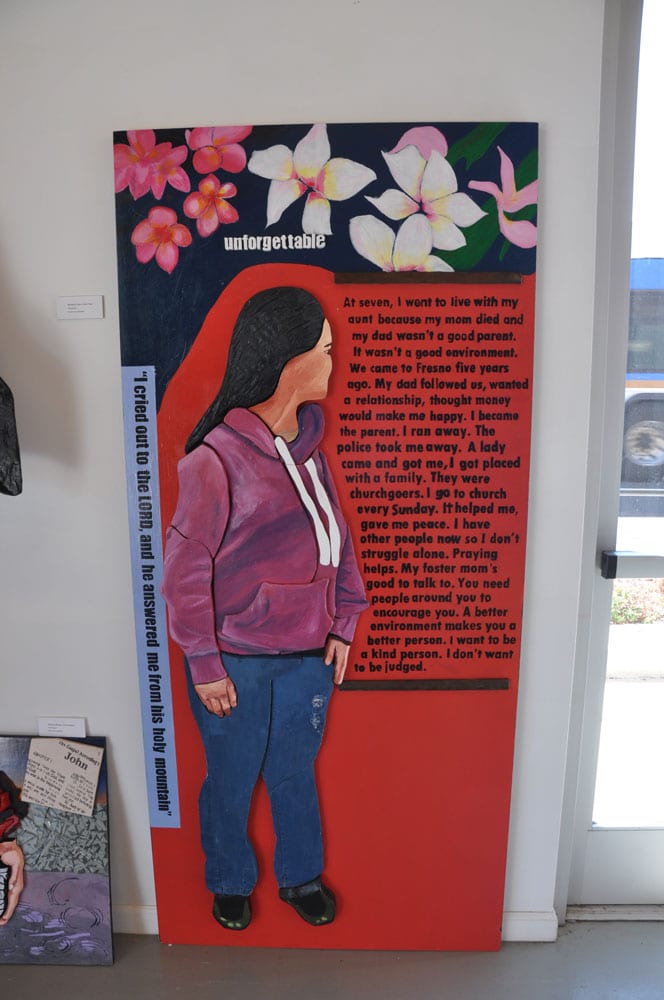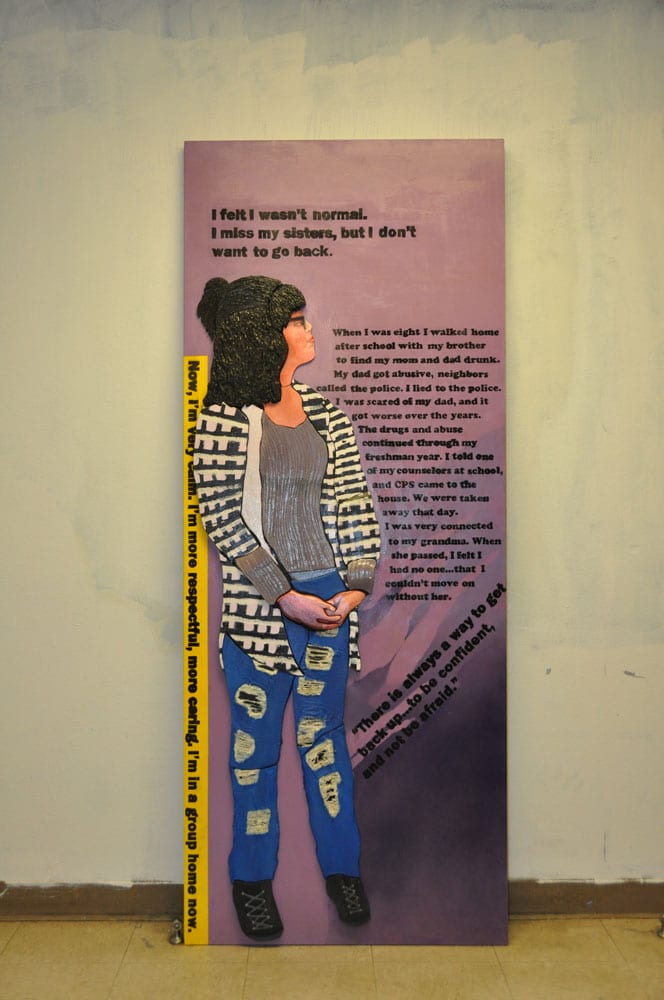Artists’ Statement
Home Work: Foster Love. Foster Hope. Foster Home.
This year’s project began during semester 1 as we explored the essential question- What is the meaning of home? The word DISPLACEMENT was selected to cover both projects for semester 1 and semester 2. During semester 1, our focus was the 75th Anniversary of the Japanese Interment. For Semester 2, the idea of Displacement was inspired by our project for the 2016/2017 year entitled Rise Above. Finding a Place to Stand, which focused on the theme of Incarceration. Several students came forward with their own personal stories of with their own experiences with incarceration as well as family and friends. Many of these students had first-hand experience with the foster care system, which informed the second leg of our displacement project entitled, HomeWork. Foster Love. Foster Hope. Foster Home.
Several students self-identified to be a part of the semester 2 project. Most of the students were still attending McLane High School. One was a previous graduate, and there was one who was a part of a family of three siblings, one of which left McLane to attend another high school. Interview times were arranged to capture their stories. Life-size Assemblage Portraits: Each person interviewed was to be to be featured in a life-sized portrait using a variety of materials and assembled (assemblage), then painted. Pieces used in the portraits serve as metaphors for the journey and experiences of these students in the foster care system. These “textures” symbolized the harsh textures of the lines as they make their journey. Text elements from their interviews were incorporated into the backgrounds of the portraits to amplify their stories. Trash Bags: Early into the research part of the project, it was determined that the trashbag was a powerful metaphor for the project. During the interview process students were asked what items they would collect and put into a trash bag as they were being “moved” to another placement. Students brought in their personal artifacts, treasured items with their own personal stories, to be photographed, which were given to various student artists to re-create using a variety of media. Students re-fashioned theses artifacts out of wood, paint, joint compound, papier mache, and chicken wire. The trash bags, themselves were constructed chicken wire, and covered with several coats of papier mache then finally coated with joint compound. The surface of the trash bags were collaged with pieces of black plastic trash bag material. Self Portrait: All foster students were asked to paint a self-portrait of who they are ‘on the inside’. Phetlavanh was the only one to complete the task. Paintings: The large paintings were done by art students who picked poems from Mr. Garcia’s class. The Fresno City Map: Another key factor that emerged from our interviews was the “chaos of placements” of our students in the foster care system; foster homes, downtown offices, group homes. In an effort to capture this chaos students designed a large eight foot by eight foot map of the city, which included a few of the major streets coursing through the city. The map was constructed of pieces of painted art papers (collage). Student artists cut stamps to form the very unique vocabulary of the foster care system that came out of the research. The colored lines represent each foster student’s personal journey through the foster care system from place to place over the years.
Rommel Contreras: Art Teacher
Jessica Ketchum: Art Teacher
Marc Patterson: Art Teacher
Donny Garcia: ELA Teacher
Marina Santos: ELA Teacher
Project Details
Advanced art students collaborated in teams to work on nine McLane full body student portraits using blank hollow core door panels. Student artists used a combination of materials and techniques (mixed media assemblage) to create their artworks. Select text from each foster student’s story was hand lettered on the panels. Images on the panels were selected to represent significant aspects of the foster student’s life/story. Student artists manufactured “trashbags” to hold each foster student’s artifacts. Each artifact was hand crafted from a variety of materials; chicken wire, papier mache, joint compound, wood, paint, wire, foam, found objects, and plastic. The trashbag was used to represent a powerful metaphor of how society views the personal belongings of foster children. Openings were carved out of each trashbag to allow viewers to see the artifacts. The outside of the trachbags were collaged onto the surfaces with scraps of actual trashbags to give them the look and feel of real trashbags. Other art classes painted designs on maker bags which were sold as a fundraiser to support children in the foster care system.
Check Out the Process
Media
Media to come soon!



